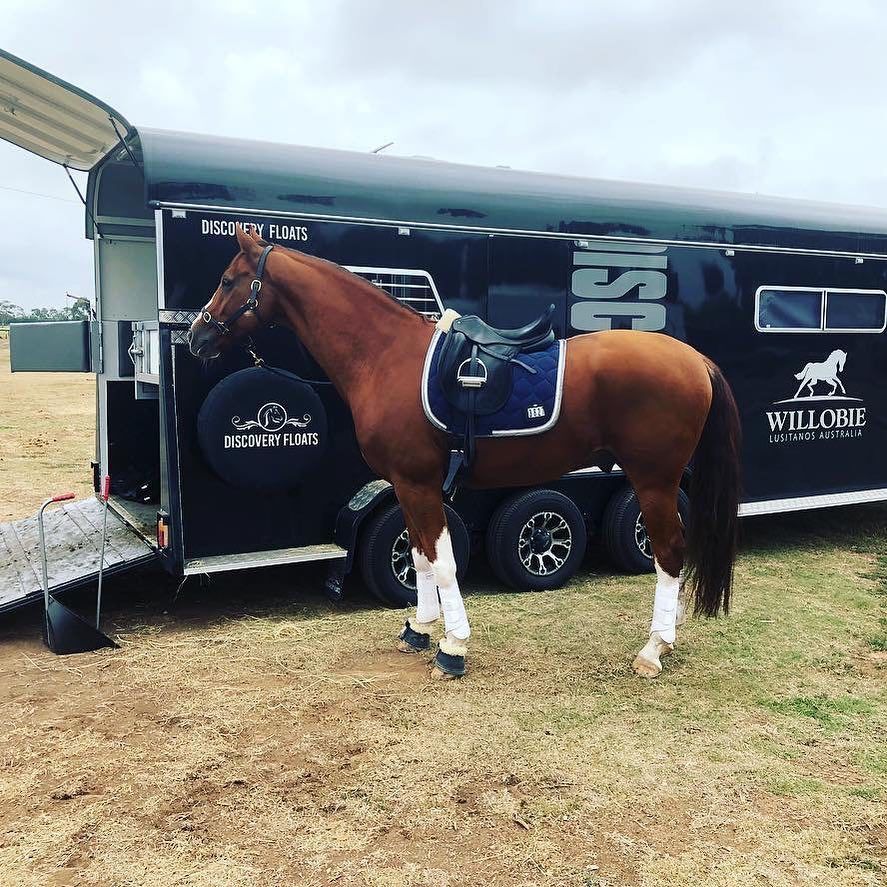Towing a horse float, is a little different to everyday driving, and requires additional driving skills and safety precautions. Put a horse in a horse float and you’ve got a couple of tonnes of unstable weight behind your vehicle. Horses move around, it can be unsettling as you feel it through the car. Each horse has its own character: some will travel well and others won’t. The following tips help your horse feel comfortable in the horse float while you’re driving.
If you have never driven with a horse float, take the time to familiaraise yourself. Hitch up an empty float and get used to manoeuvring it. Reversing will probably be the most challenging part of using the float.
Being a good driver generally helps to make you a good float driver. Keep both hands on the wheel, do not tailgate the car in front, keep your eyes on the road, and stick to your side of the road, especially on curves approaching the brow of a hill. These are just good driving habits, but they are extra important when you have to deal with towing a loaded float.
Taking corners ~ speed is important. Different horses will cope with corners differently. As a good guideline, until you know your horse, start at 10kph under any advisory speed of the given curb / corner.
Camber ~ the camber is the slope of the road in a corner. Adverse camber is where the slope of the road is towards the outside of the bend; roads rarely have this type of camber because it’s dangerous, but it is frequently found on roundabouts. Positive camber, where the road slopes to the inside of the turn, provides more grip and stability.
Turning right or left at a t-intersection or crossroads. Use only very gentle acceleration from rest, or keep a consistent speed if you are making a turn without having to stop. Wait until the car and trailer are in a straight line until you apply more acceleration. Horses don’t mind acceleration in a straight line, but find it more difficult to deal with cornering and braking.
Driveways. When pulling out of a driveway with a kerb or gutter, go very slow as these will upset a horse’s balance.
Distances and braking. Four seconds in the dry is the minimum in case you need to brake suddenly. Braking should always be smooth, progressive and as gentle as possible right up until the float stops. You must look much further up the road to anticipate what will happen (at least 12 seconds), especially when you are approaching traffic lights that might change colour before you get there. Because of the weight of the trailer it will take you further to stop than usual.
Safe braking. When floating horses, do not apply the brakes suddenly with a horse on board. Horses become very unsettled by sudden jerky movements and could easily develop bad travelling habits as a consequenceSudden heavy braking can cause your float to ‘jacknife’. In wet and slippery conditions, extra care must be taken to avoid this risk.
Accelerating and decelerating suddenly can give the horse a jerky, uncomfortable ride just as much as sudden braking. Make sure that you put your foot on and off the accelerator with care so that increases and decreases of speed are very gradual.
Steering and cornering. Note that your horse will have to constantly adjust its balance if you do not steer smoothly either in a straight line or around corners, and this will tire it out.
Courtesy. Keep an eye on your mirrors so that you are always aware of vehicles coming up behind you and trying to overtake. You will frequently find several other vehicles following, wanting to get past. When it’s safe to do so, keep left and perhaps slow down a bit toallow them to pass.
Downhill driving. If possible, use your car gears to help with braking otherwise you risk getting brake fade, even though the trailer has its own brakes. Change down early; it doesn’t matter if the engine is racing, as long as you don’t exceed the rev limit.
Trailer sway (where the trailer starts swinging from side-to-side). As the horse is a loose load in the back, heightened in weather exremes or eccess speed, its movement can initiate trailer sway. Many modern cars have an electronic system call trailer sway mitigation (or something similar) which will automatically stop this, but if your car doesn’t have it, the first thing to do is take your foot off the accelerator. Don’t brake unless you absolutely have to. If you can apply the float brakes, apply them separately. Keep a firm grip on the steering wheel. If the sway is excessive, pull over when safe to do so, and check the horse and trailer – the sway might have been caused by a flat tyre.
Long journeys. For those long hauls, take regular stops – at least every two / three hours. This keeps you more alert and it allows you to check the horse, give it some water, allow it to stretch its legs, etc.
Sometimes it's all just basic common sense. Be safe out there, and look after yourself and your precious cargo !!
